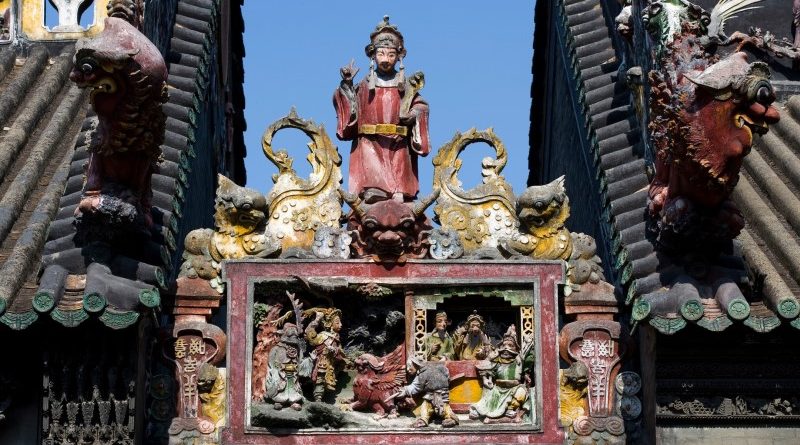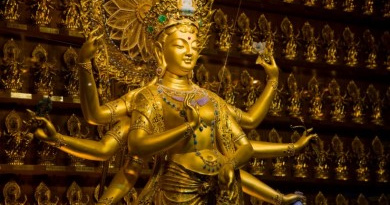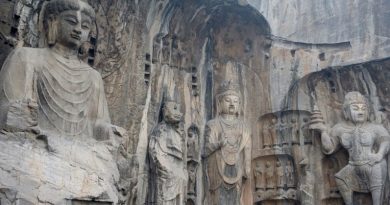Guangzhou (Canton): The Legendary Trading Port of the 18th Century
Formerly known as ‘Canton’, Guangzhou is the capital city of Guangdong Province, 2 hours by train from Hong Kong. Guangzhou had been a busy trading port since the 1690s, when the Europeans, Arabs from the Middle East and Muslims from India came here to trade. By the middle of 18th century, the city emerged as one of the world’s great trading port. Though the Middle Kingdom the primarily maintained a ‘close door’ policy, foreigners were allowed to stay and carried out commercial activities at ‘Thirteen Hongs’ or ‘Canton Factories’ area during the trading seasons and the rest of the time they needed to retreat to Macau.
Today, Guangzhou is a metropolitan city. She experienced a face lift for Asian Games 2010. New landmarks: Guangzhou Tower, Guangzhou Museum and the Guangzhou Opera House are built. However, the beauty of Guangzhou lies with her ‘Lingnan’ culture: Xiguan style architecture, folk and decorative art by means of stone/wood/brick carvings and porcelain and clay sculptures and make herself stand out from the rest of the Chinese cities.
Guangzhou and Hong Kong
Before the Opium War, Hong Kong was only a small village under the administration of Guangzhou (Canton). Hong Kong and Guangzhou therefore shares a lot of similarity: we speak the same local dialect, we celebrate the same festivals and follow similar cultural practices, and our restaurant chefs do the same dishes. Hong Kong has its root in Guangzhou but the war set them apart. Nevertheless, movements of people and goods between the two cities never stop. By the early 1970s and 80s, foreign investments, in particular investments from Hong Kong make the Pearl River Delta area nearby Guangzhou one of the world’s factories, producing and manufacturing products in large amount and ship them all over the world. The two cities share a lot of similarities in terms of food and Chinese culture, but there are subtle differences in expression due to their varying paths in their course of history. A tour to Hong Kong and Guangzhou will tell you a tale of the two cities.
| Day 1 | The Guangzhou style Visit the Yuxie Park where you'll find the Statue of Five Lambs - the symbol of Guangzhou for a photo stop before a tour to Temple of Six Banyan Trees - one of the best four Buddhist Temples in Guangzhou. Explore the Xiguan Mansions - built by rich merchants in Guangdong area and their 'Lingnan' architectural style which is typically Guangdong. Some free time to explore the pedestrian shopping streets in Shangxiajiu. Enjoy a river cruise along the Pearl River in the evening. |
| Day 2 | East Meets West Guangzhou Explore the Chen Ancestral Temple. The Temple was built by donations from the Chen clan from Guangdong between 1888 - 1894. The amazing sculpture: wooden, stone, bricks, porcelain etc telling stories and legends in Chinese culture is a must see for visitors to Guangzhou. Take a leisure walk to Shamian, the British and the French concessions during the 1860s and they built a number of European style mansions as their consulates, trading offices and financial organisations. Make a photo stop at the Sacred Heart Cathedral built by the French in the 1860s modelled after Basilica of St Clotilde. The Cathedral is the largest Gothic style church in China and in SE Asia. Stroll along Yide Road where you'll find a wholesale markets for dried seafood and other common Chinese herbs before returning to the hotel. |
| Day 3 | Departure/Optional Tour Depart for other destinations or opt for Mount Danxia Tour. |
Optional 3 Days /2 Nights Tour to Mt Danxia
| Day 1 | A Scenic Hike in Shaoguan Transfer to Shaoguan by high speed train. On arrival, enjoy a scenic and gentle hike up to the Masculine Rock. You’ll pass through Jiadun Pagoda, Heavenly Ladder, Simeizhai and Saibu Rock. There will be plenty of photo opportunities along the way. |
| Day 2 | Mt Danxia Rise early in the morning to the Shaoyin Pagoda for photos of the sun rise. After breakfast, tour to Changlou Summit where you enjoy a hike along the reddish cliff as well as the virgin forest. Take a boat cruise in the afternoon for more photo snapshots opportunities of the Danxia landscape. |
| Day 3 | The Gorge and the Monastery Tour to the biggest gorge in Guangdong: Ruyuan Gorge. There are waterfalls, virgin forests and ancient trees, constructing a perfect landscape picture. Make a final stop at Nanhua Monastery. The Monastery was first built in year 504, and is the biggest Buddhist monastery in southern China. Return to Guangzhou by high speed train. |
The Pearl River
The Pearl River that throws flow Guangzhou is the third longest river in China after the Yellow River and the Yangtze. The Pearl River and the Pearl River Delta area, together with mild sub-tropical climate provide favourable conditions for farming. The river is also a working river where cargo ships frequent. It helps make the Pearl River Delta area a dynamic economic region, which virtually speeds up China’s economic reform process and the internationalisation of the Chinese economy.
Local cuisine
There is a saying that ‘if you want to eat, eat in Guangzhou’. Its mild subtropical climate helps grow an abundance of farm produce, and plentiful feed for livestock means high quality meat and poultry, Fresh ingredients were used to retain their flavour and texture. Natural seasoning such as ginger, spring onion, garlic are wildly used to add natural flavour to the dishes. Dim sum, stir fry, roast meat and soups are the most popular and all these make Guangdong cuisine a high cultured one.
Throw a Party
The opening of new international hotels: Grand Hyatt, Ritz Carlton, Westin, Four Seasons, Sofitel etc make Guangzhou an ideal destination for meetings and incentives, offering meeting spaces and deluxe accommodation facilities. Recently, there are old factories and warehouses being converted into restaurants, entertainment venues and event spaces. The building itself has a story to tell and they are interesting venues to throw an unforgettable party.
From Guangzhou to…
Guangzhou is connected to Hong Kong by a Throughtrain which takes two hours. Guangzhou is also one of the best starting point for a journey to China. The Guangzhou airport has daily flights and trains to many destinations. In addition to big cities such as Beijing and Shanghai, there are also connections to south western parts of China such as: Guilin and Yunnan.




